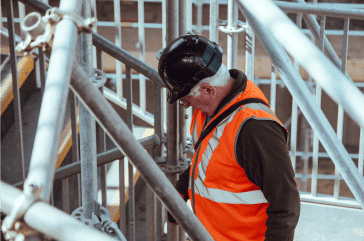Builder’s Risk Insurance is a vital type of coverage aimed at protecting buildings and structures under construction. As an insurance broker, understanding the ins and outs of this coverage is essential for guiding your clients through the construction phase of their projects. Whether it’s residential or commercial construction, Builder’s Risk Insurance covers risks such as theft, vandalism, and natural disasters, ensuring that the project continues smoothly despite setbacks.
In this article, we will explore the essentials of Builder’s Risk Insurance, discuss key coverages included in these policies, highlight common pitfalls to avoid, and offer practical tips for brokers to effectively sell Builder’s Risk Insurance. Understanding these aspects will empower you to better serve your clients and enhance their confidence in your expertise.
What is Builder’s Risk Insurance?
Builder’s Risk Insurance is a specialized form of property insurance designed to cover buildings under construction. This insurance addresses the need for protection against physical loss or damage during the construction phase. It typically includes coverage for the structure, materials, and equipment used in the building process, whether they are on-site, in transit, or stored elsewhere.
This type of insurance is essential for various stakeholders, including property owners, general contractors, and subcontractors. A construction project faces several risks like theft, vandalism, and weather damage. Builder’s Risk Insurance ensures that any financial loss due to these events is minimized, allowing the project to continue without major financial disruptions.
Policies are usually on a temporary basis, tailored to the duration of the construction project, and can be extended as needed. Once construction is complete, coverage typically ends, and a more permanent property insurance policy is required. Understanding the specific needs of each project ensures proper coverage, which makes this insurance indispensable for construction-related undertakings.
Key Coverages in Builder’s Risk Policies
Builder’s Risk Insurance policies incorporate a range of coverages. Here are the key ones you should be aware of:
1. Property Coverage: This includes protection for the building under construction. Coverage extends to materials, supplies, and fixtures that will become part of the structure. Materials stored off-site and those in transit can also be included.
2. Equipment Coverage: Coverage for construction equipment and machinery is another critical aspect. This can include items such as bulldozers, cranes, and scaffolding. Damage or loss of these items can severely impact a project’s timeline and budget.
3. Theft and Vandalism Coverage: Construction sites are often targets for theft and vandalism. Protecting against these risks is crucial to avoid project delays and additional expenses.
4. Natural Disasters: Events like fires, storms, and lightning can cause significant damage to a construction project. Policies generally cover damages from these events, ensuring continuity in the building process.
5. Soft Costs: These include additional expenses not directly related to physical damage but incurred due to it, such as architect fees, legal costs, or interest on loans during delays. Some policies also cover business interruption, compensating for lost income if the project is delayed beyond the planned completion date.
Knowing these coverages allows brokers to advise clients thoroughly, ensuring they understand what their policy includes and excludes. Tailoring coverage to meet the specific needs of a project is crucial for comprehensive protection.
Avoiding Common Pitfalls in Builder’s Risk Insurance
Navigating Builder’s Risk Insurance can be tricky. Here are some common pitfalls brokers should help clients avoid:
1. Underinsurance: One of the biggest mistakes is underestimating the project’s total value. Ensuring complete coverage for the current and projected value of a project isn’t just smart—it’s necessary. Regular project assessments help in adjusting coverage as needed.
2. Lapses in Coverage: Construction timelines can extend beyond initial estimates. Brokers should remind clients to extend policy coverage accordingly to prevent lapses. A gap in coverage can leave the project exposed to significant financial risk.
3. Overlooking Soft Costs: Ignoring indirect costs like legal and design fees and loan interest can result in a major financial blow if a loss occurs. Soft costs are often overlooked, but including them in the policy ensures a comprehensive safety net.
4. Miscommunication: It’s vital to clarify who is responsible for securing and maintaining the policy. Miscommunications can lead to misunderstandings, leaving the project without critical coverage at crucial times.
By addressing these issues head-on, brokers can help their clients achieve peace of mind and ensure their projects remain protected against all possible risks.
Tips for Brokers to Sell Builder’s Risk Insurance Effectively
Selling Builder’s Risk Insurance takes a strategic approach. Here are some tips to become more effective:
1. Know the Product: Understanding every detail of the Builder’s Risk policy is essential. It allows brokers to explain coverages confidently and address any client concerns effectively.
2. Highlight the Necessity: Emphasize the importance of Builder’s Risk Insurance to potential clients. Explain how it safeguards their investment against common and unexpected risks during construction.
3. Provide Custom Solutions: Each construction project is unique. Tailor your recommendations based on the specific needs and potential risks of the project. Customized solutions show clients you understand their requirements and add value through your expertise.
4. Educational Approach: Offer clients regular informational sessions or resources about the nuances of Builder’s Risk Insurance. Educated clients are more likely to recognize the importance of comprehensive coverage and appreciate the value you bring.
5. Build Relationships: Foster strong relationships with clients through regular check-ins and updates about their policies and any changes in the insurance landscape. This trust builds loyalty and encourages repeat business.
Applying these tips can make the selling process smoother and more successful, ensuring clients feel confident and well-protected throughout their projects.
Conclusion
Understanding what Builder’s Risk Insurance encompasses, from property and equipment coverage to addressing natural disasters and soft costs, helps in providing the most accurate advice. By avoiding common pitfalls and employing effective selling strategies, we can better serve our clients, ultimately ensuring their satisfaction and loyalty.
Approved Casualty & Surety offers a broad range of Builder’s Risk Insurance options tailored to meet the needs of various construction projects. For personalized guidance and expert solutions to help you support your clients better, contact Approved Casualty & Surety today.
Disclaimer: The information provided in this article is intended for illustrative purposes only and should not be considered as actual insurance advice. Our articles offer insights and general guidance on various insurance topics, however, they do not substitute professional advice tailored to your specific circumstances. For expert, personalized insurance advice and solutions, please contact our licensed insurance brokers.







